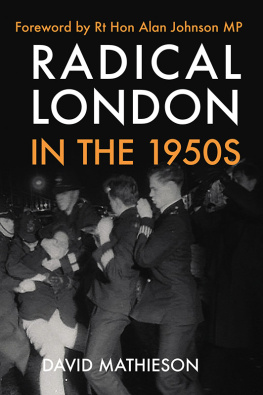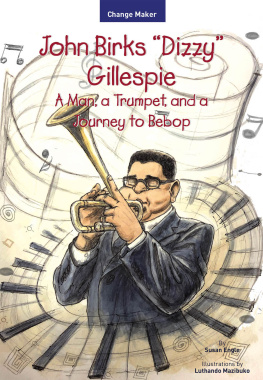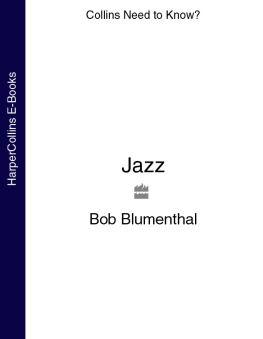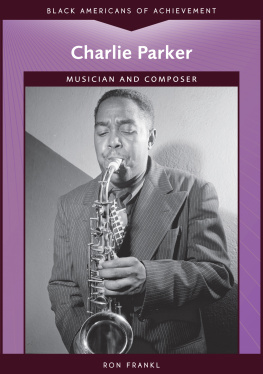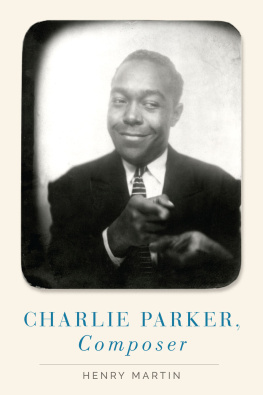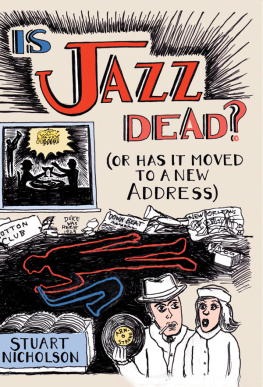Giant Steps
Bebop and the Creators of Modern Jazz 194565

First published in Great Britain in 1999 by Payback Press, an imprint of Canongate Books Ltd, 14 High Street, Edinburgh, EH1 1TE
Copyright Kenny Mathieson 1999
The moral rights of the author have been asserted
British Library Cataloguing-in-Publication Data
A catalogue record for this book is available on request from the British Library
ISBN 978 0 86241 859 3
eISBN 978 0 85786 617 2
Typeset by Palimpsest Book Production Ltd, Falkirk, Stirlingshire
This digital edition first published by Canongate in 2012
www.canongate.tv
Preface
Jazz is the great musical invention of the 20th century, and as that century reaches its end, it is a form which has evolved to provide a rich and complex history. Giant Step is the first in a planned series of books which will examine the music and its most important creators. It begins with the emergence of bebop, taking the music of Dizzy Gillespie, Charlie Parker, Fats Navarro, Bud Powell and Thelonious Monk as its starting point, then moves through the subsequent extensions and developments within jazz composition, modal jazz, and free jazz reflected in the work of Charles Mingus, Max Roach, Sonny Rollins, Miles Davis, Herbie Nichols and John Coltrane.
The music of each of these great masters is examined in some detail, but in a fashion which will be accessible to the reader with no technical knowledge of music. Some basic technical matters are raised but readers should be aware that there are many ramifications to even apparently simple subjects in the realm of music theory, and even more so in practice. Happily, those interested in exploring these topics are well served with technical books and transcriptions covering all aspects of the subject.
The series grew out of a conviction that there existed a substantial gap in the bookshelves. Jazz has generated a great deal of writing over the decades, from fan-ish anecdote to impassioned polemic, the wildly impressionistic to the technically rigorous. The jazz fan now has an unparalleled choice of reading matter, with a mounting stack of reference works, histories and fast-multiplying guides to jazz on CD on the one hand, and copious biographies, reminiscences and scholarly critical studies on the other. What seemed to be missing, though, was a series of books able to offer both the curious general reader and the more committed jazz specialist considerably more substance than even a long entry in a general history or reference book could hope to do, but which would also provide an overview of a particular period, rather than focus on a biographical or analytical study of a single musician. The present series was conceived to fulfil that need. The last roughly comparable venture I am aware of is the Jazz Masters series originally published by Macmillan in the mid-1960s, focusing by decade on the major jazz figures. The fact that these books are still in print is testament to the appeal of the idea, but they are now thirty years old, and much has changed in our knowledge and understanding in the ensuing decades.
The present books will be organised by musical styles rather than chronology, and I will confess at the outset that any such ordering principle brings a certain arbitrariness with it. Stylistic definition is notoriously tricky in jazz, and some musicians allocated to a particular book would clearly fit just as well in another, while others would find a niche within more than one of the subject areas. Such arbitrariness will have to stand as a given of the series, as will the inevitable focus on the recordings of these musicians, something which will rankle with those who believe that jazz on record is only a pale shadow of the real thing. Nonetheless, the records are all that most listeners can now hope to have no one much under seventy can have heard Charlie Parker in the flesh in his prime, and no one much under fifty will have experienced John Coltrane live, other than through the recorded or filmed legacy of long-gone performances.
Having entered these caveats, we hope these books will do several things, in addition to complementing the material already out there. For those coming fresh to the music, they will provide a substantial purchase on the work of the major figures involved in its creation (and I am painfully aware of the claims of those who will be left out), building volume by volume into a wide-ranging overview of the music, while the seasoned jazz listener will find them substantial enough to merit attention, even in discussion of artists as much written-about as most of those included in Giant Steps.
Having laid down the central spine of modern jazz in this book, the series will move into less comprehensively covered territory in the subsequent volumes, addressing topics such as hard bop, cool and mainstream jazz, the post-bop and modal developments of the 1960s, and free jazz, to cite only those currently mapped out. These books will contain shorter but still very substantial essays on figures who have received rather less attention than Bird or Miles or Trane, but who have played their own significant parts in creating some of the most exciting music of the 20th century.
The next book, Cookin: Hard Bop and Soul Jazz, will look at the work of familiar names like Art Blakey, Horace Silver, Lee Morgan and Cannonball Adderley, but also at less widely written-about musicians such as Booker Ervin, Elmo Hope, Tina Brooks and Gigi Gryce, figures on whom little is readily available at this level of scope and accessibility.
I am indebted to my editors at Canongate, Jamie Byng and Colin McLear, not only for their work on the book, but also for their sympathetic and enthusiastic acceptance and support of this project. I am also deeply grateful for the support of my wife, Maggie, who is no jazz fan, but has learned to live with my obsession. The book is dedicated to the memory of my mother, Helen Mathieson, who died shortly before its completion and who gifted me among many other things both the desire to be a writer and the beginnings of my love of jazz.
It would be remiss not to make at least a general acknowledgement of the various publications which have featured my work over the years, and also the influence of the many fine writers on both sides of the Atlantic who have informed my understanding and enhanced my enjoyment of jazz. I hope that this book and its successors can give readers the same kind of pleasure, inspiration, elation and provocation as I have had from hearing, studying, writing about, and above all enjoying this great music.
Kenny Mathieson

Dizzy Gillespie
Unlike Charlie Parker, who burned with incandescent brilliance and died young, Dizzy Gillespie carved out a lengthy career and became a respected elder statesman of the music, which is an unhip thing to do in jazz mythology. In the birth of bebop, though, his pyrotechnic brilliance was the perfect foil for Parkers own, and was underpinned by a more thorough understanding of harmonic theory than many of his contemporaries routinely possessed. If Dizzy is assured immortality on the strength of his contribution to the emergency of bebop alone, his place in the history of 20th-century music will rest on a considerably wider achievement.
Dizzy also enshrined what many saw as a contradiction. Like Louis Armstrong, he was both a great innovator and a great entertainer, a man who did previously undreamed-of things on trumpet, but at the same time was ready and willing to mug furiously on stage, and, even worse, send up his own artistic inventions in songs like He Beeped When He Shouldve Bopped. His clowning antics have been held against him by those who saw them as either Uncle Tom-style servility or a betrayal of the sacred torch of musical revolution, but Gillespie was a natural showman as well as a brilliant musician, and is one of the select band of jazzmen who have become household names. Unlike Armstrong, he was no great singer and yet even on these novelty tunes his scatting was always highly inventive and musically sophisticated, a mixture of extraordinary skill and zaniness which is partly a reflection of his natural ebullience and partly a shrewd awareness of more practical necessities.
Next page

